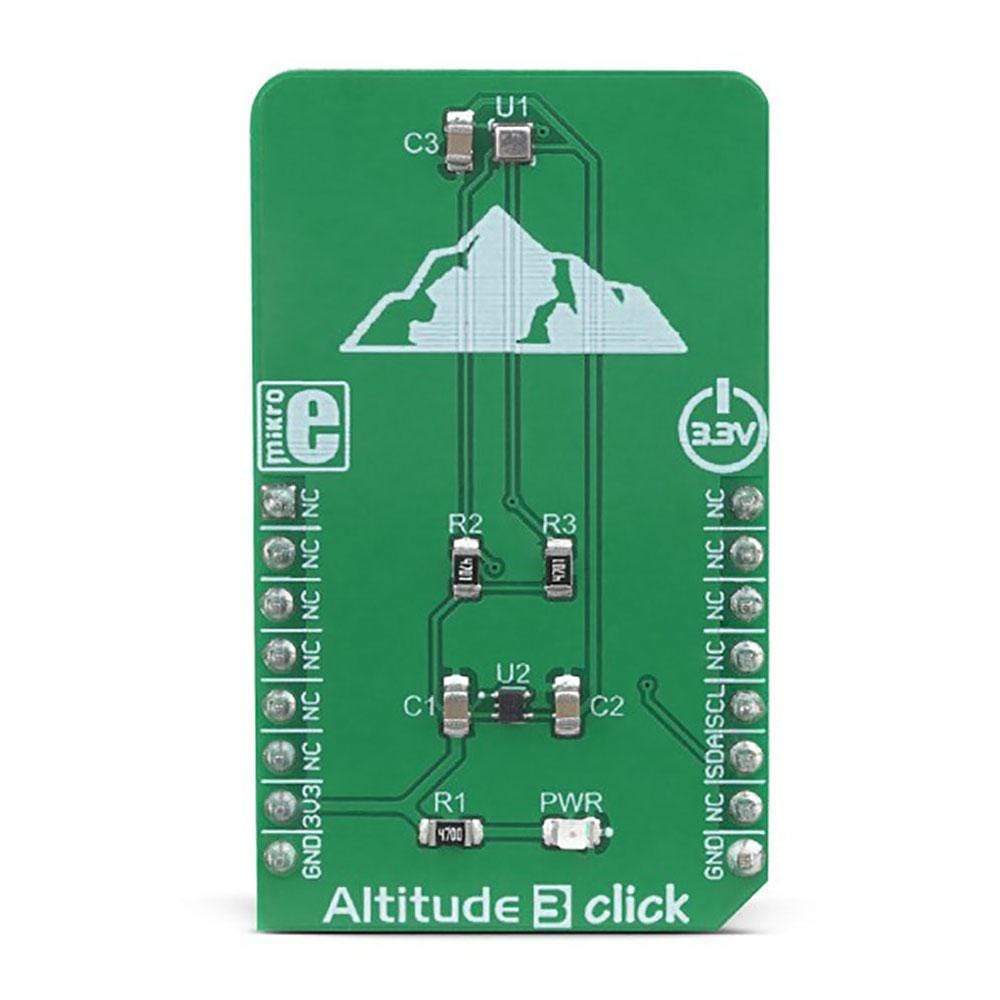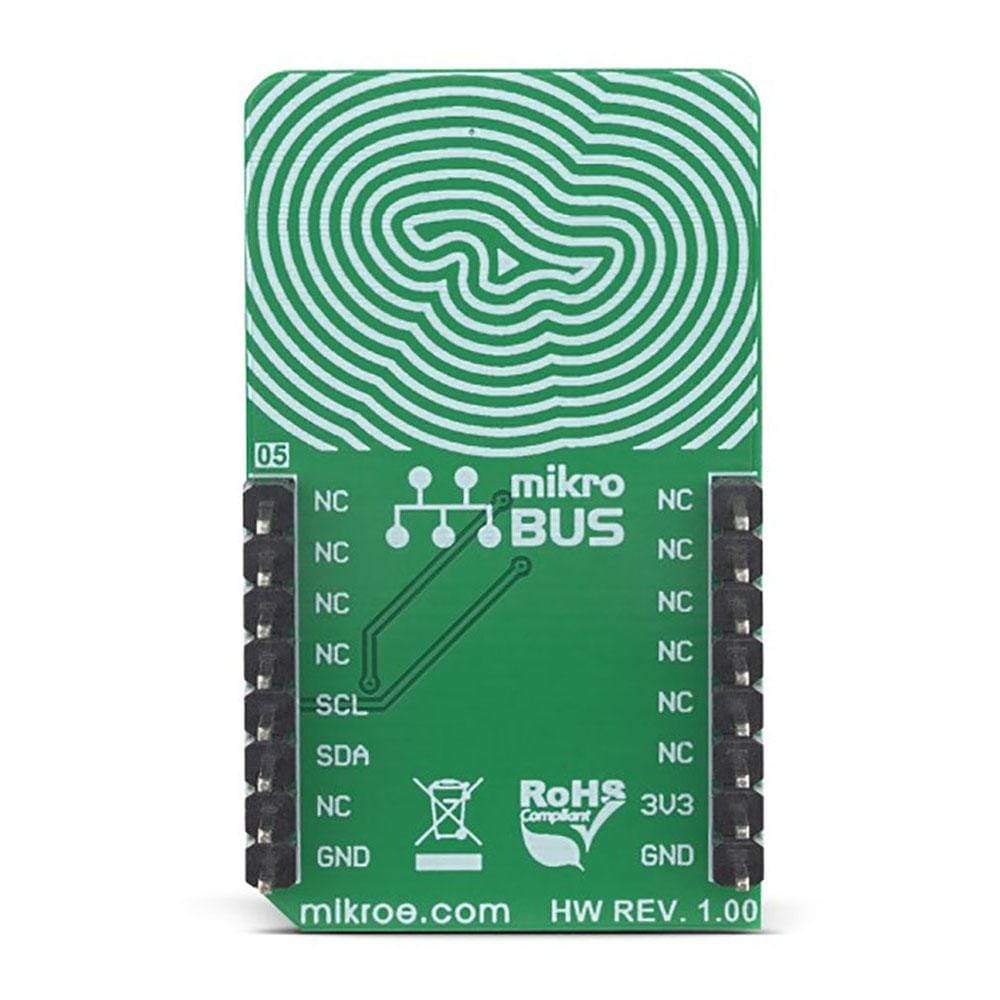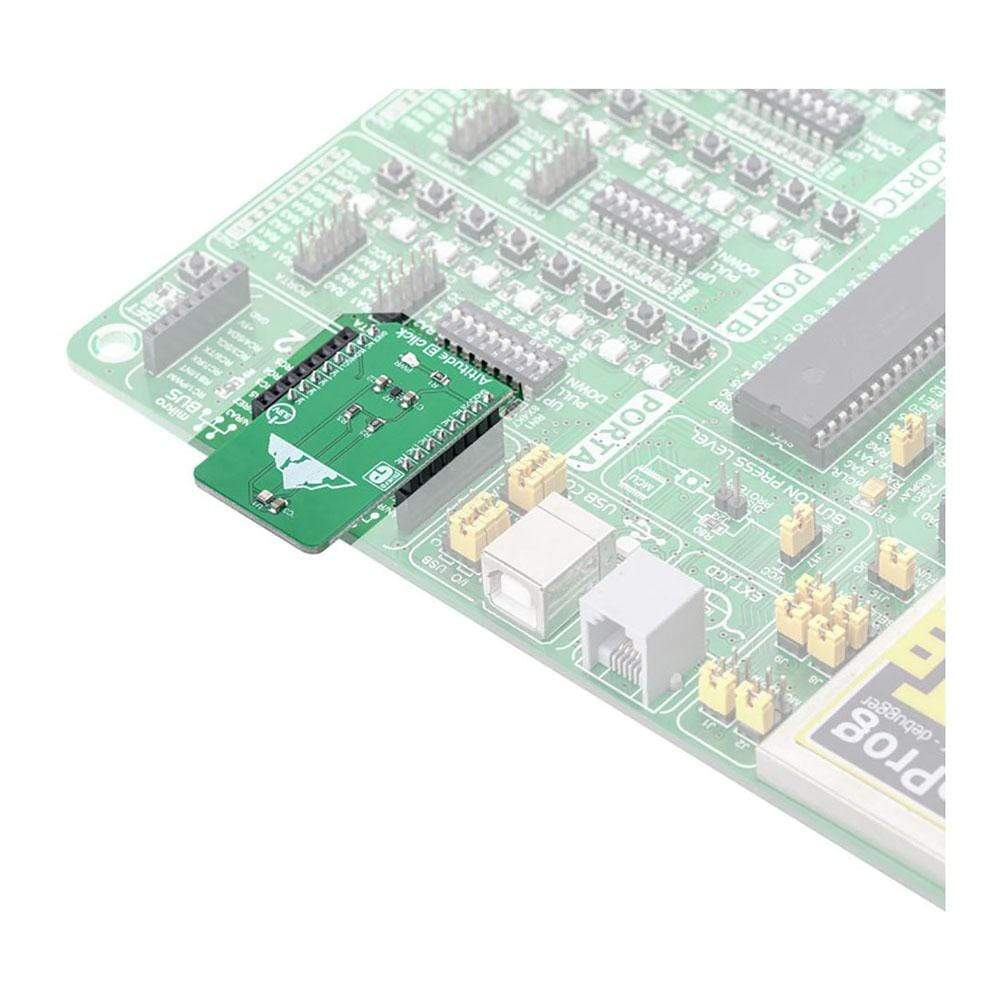



Overview
The Altitude 3 Click Board™ allows high-resolution barometric pressure measurement, by utilizing the ICP-10100, an integrated barometric pressure and temperature sensor. Based on the advanced MEMS capacitive sensing technology, it offers industry-level accuracy and thermal stability. A very high absolute pressure accuracy up to ±1 Pa allows the Altitude 3 Click Board™ to sense very small altitude changes, within the magnitude of about 10 cm. The temperature sensor offers accuracy up to ±0.4°C, in the range from -40°C to 85°C. Low power requirements make it a perfect choice for various battery-operated applications
Downloads
Das Altitude 3 Click Board™ ermöglicht hochauflösende barometrische Druckmessungen durch Verwendung des ICP-10100, eines integrierten barometrischen Druck- und Temperatursensors. Basierend auf der fortschrittlichen kapazitiven MEMS-Sensortechnologie bietet es Genauigkeit und thermische Stabilität auf Industrieniveau. Eine sehr hohe absolute Druckgenauigkeit von bis zu ±1 Pa ermöglicht es dem Altitude 3 Click Board™, sehr kleine Höhenänderungen im Bereich von etwa 10 cm zu erfassen. Der Temperatursensor bietet eine Genauigkeit von bis zu ±0,4 °C im Bereich von -40 °C bis 85 °C. Der geringe Stromverbrauch macht es zur perfekten Wahl für verschiedene batteriebetriebene Anwendungen
| General Information | |
|---|---|
Part Number (SKU) |
MIKROE-3328
|
Manufacturer |
|
| Physical and Mechanical | |
Weight |
0.018 kg
|
| Other | |
Country of Origin |
|
HS Code Customs Tariff code
|
|
EAN |
8606018714308
|
Warranty |
|
Frequently Asked Questions
Have a Question?
Be the first to ask a question about this.




